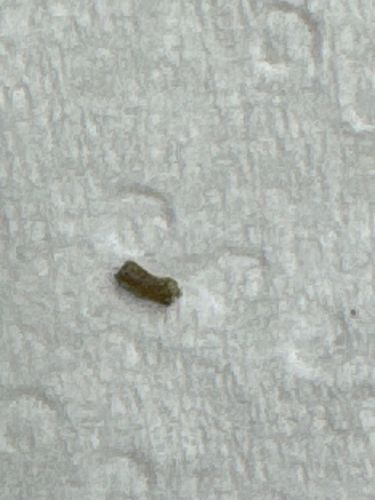Case-bearing insect larva (potentially Caddisfly larva or Case-bearing Clothes Moth larva)
Scientific Name: Difficult to determine precisely from the image. Could be from various genera within Trichoptera (caddisflies) or Tineola/Tinea (clothes moths).
Order & Family: Order: Depends on identification. If it's a Caddisfly, Order is Trichoptera. If it's a Case-bearing Clothes Moth, Order is Lepidoptera, Family is Tineidae.
Size: Typically, case-bearing larvae can range from a few millimeters to several centimeters long, depending on the species. The object in the image appears to be on the smaller end, likely under 1 cm.

Natural Habitat
If it's a Caddisfly larva, its habitat is aquatic, found in streams, rivers, and ponds. If it's a Case-bearing Clothes Moth larva, its habitat is terrestrial, typically indoors in undisturbed areas with natural fibers like closets, attics, or storage areas.
Diet & Feeding
The diet depends heavily on the specific type of case-bearing insect. Caddisfly larvae (Trichoptera) are aquatic and feed on algae, detritus, or other small aquatic organisms. Case-bearing Clothes Moth larvae (Tineidae) are terrestrial and feed on natural fibers like wool, fur, feathers, and silk.
Behavior Patterns
Case-bearing insects live in a protective silk case covered with bits of debris (e.g., silk, sand, plant fragments). They move slowly, carrying their case with them. Adults are winged moths, but the larvae are the ones that construct and inhabit these distinctive cases. The cases provide camouflage and protection from predators.
Risks & Benefits
Risks: If it's a Case-bearing Clothes Moth larva, it is a significant household pest that can damage textiles, clothing, carpets, and upholstered furniture made of natural fibers. Benefits: Caddisfly larvae are important indicators of water quality and serve as a food source for fish and other aquatic animals in their ecosystem.
Identified on: 8/26/2025